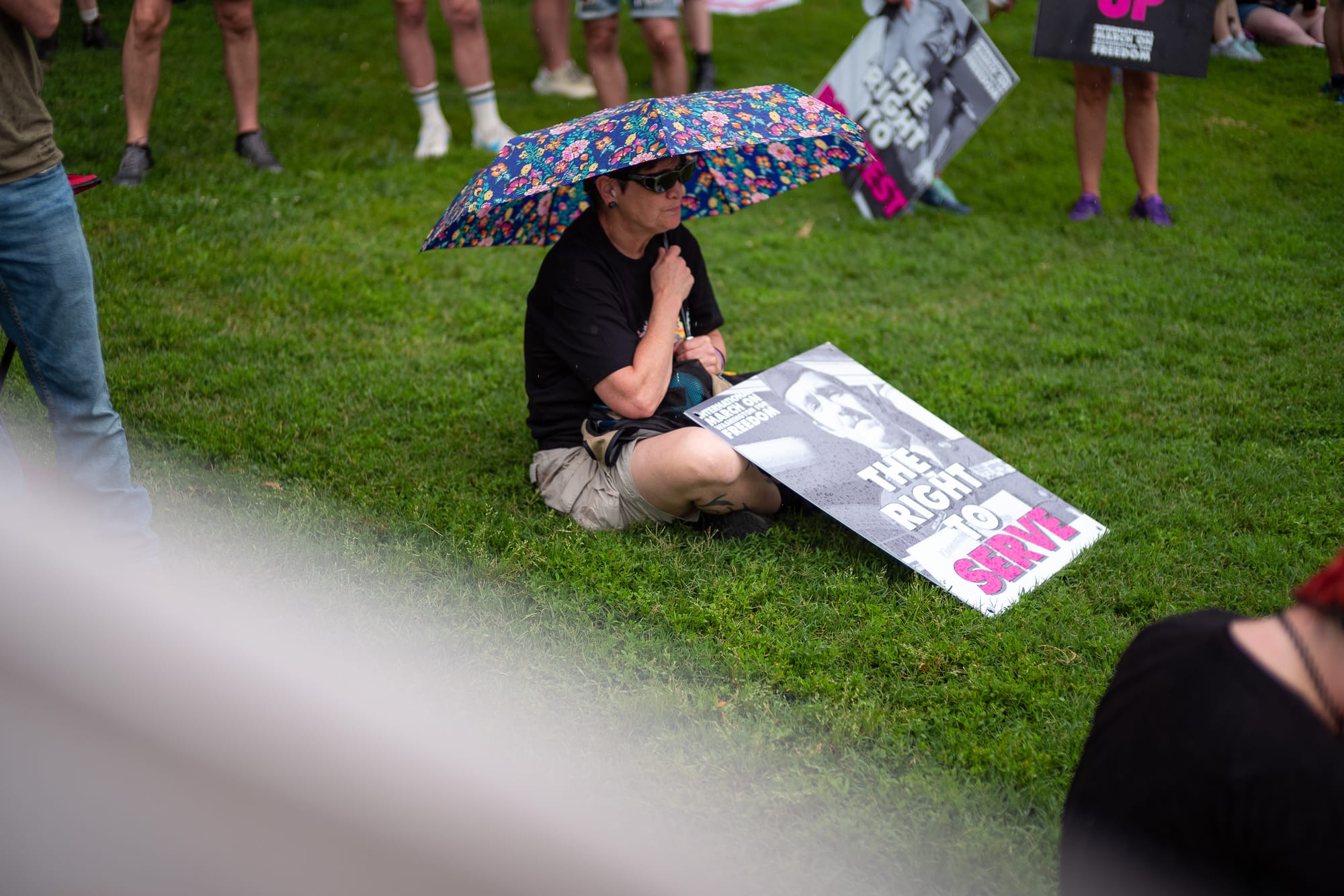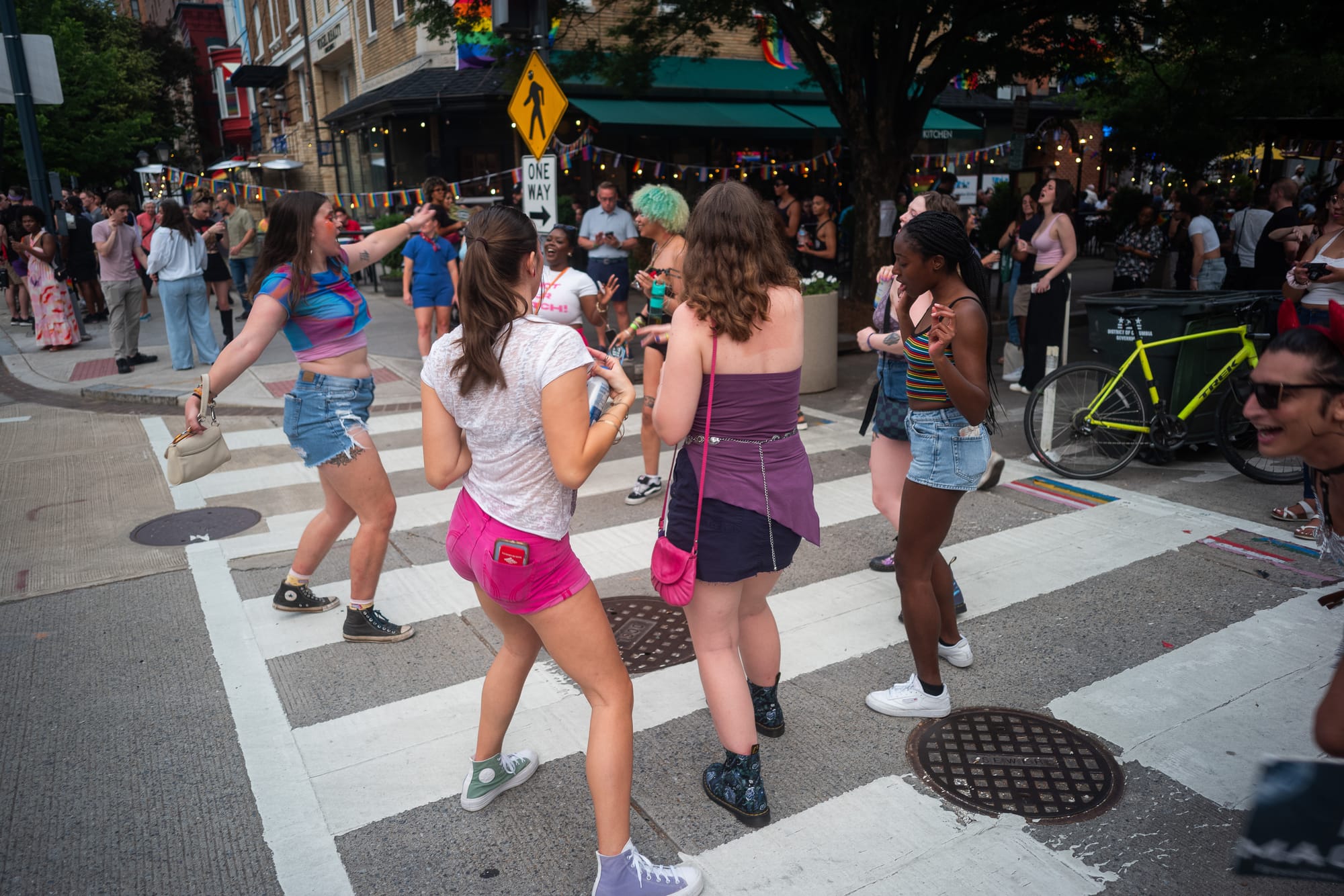No ICE in our World Cup: Your weekly Civics Roundup
Plus, a massive public safety hearing, ways to support mutual aid, and more.
Against a tense political backdrop and corporate pullback, many locals turned out just as they do every year.

A music fest featuring Jennifer Lopez and Troye Sivan. A parade float that doubled as a wedding venue. A rally and march that carried on despite the rain. And a Rainbow Road.
Last weekend, WorldPride drew to a ceremonious close. The festival ran May 17 through June 8, delivering 350+ events throughout the District and hitting multiple snags along the way. Those included the departure of corporate sponsors such as Deloitte and Booz Allen Hamilton, the cancellation of a Shakira-headlined opening concert, and the on-again-off-again closing of Dupont Circle Park that coincided with nearby violence during the festival’s closing weekend.
The tense climate in Washington (and the country) around LGBTQ+ freedoms and protections also took a toll on the fest in palpable ways. In addition to the loss of multiple sponsors, plans were scrapped to host events at The Kennedy Center. International participants changed their plans due to concerns about their safety in this political environment. And crowd estimates were cut in half a couple of months after President Donald Trump entered the White House.
The Trump administration continues to roll out initiatives that attack LGBTQ+ rights and freedoms—from eliminating DEI programs to restricting access to gender-affirming health care to barring transgender people from military service.
Chenay Arberry attended WorldPride’s closing weekend, watching floats and parade participants pass by from Spain, Denmark and Canada. Arberry says the experience made her consider how those countries’ more inclusive policies contrast with those of the present-day United States.
“It just made me be reflective. … Would I rather be a queer person here or there?” she says.
But despite the challenges, organizers were determined that the show would go on – and in the end, celebrations went forward, often with a renewed sense of purpose and clarity given the current political climate.
“[It] was a great experience,” says Ashley Smith, board president of WorldPride producer Capital Pride Alliance. WorldPride’s emphasis on inclusivity – spotlighting Black Pride, Trans Pride and other communities – was a particular highlight, Smith says, and “really allowed for people to come together in a way that they may not have in the past.”

WorldPride is considered the largest LGBTQ+ celebration in the world, first held in Rome 25 years ago. In 2022, D.C. was selected as this year’s host city after initially losing the bid to Taiwan. The festival is a first for D.C. and commemorates 50 years of Pride celebrations in the District.
Earlier this year, the Alliance pared back its initial $20 million budget for the fest by 25% after a reduction in sponsor support. While actual spending numbers are not yet available, Smith says, the District contributed roughly half of the projected $15 million in spending.
That funding included $5 million allocated in the FY25 budget, $1.4 million from the Deputy Mayor for Planning and Economic Development’s Special Event Relief Fund, a $900,000 Large Event Grant and a $75,000 DMPED Downtown Grant, according to DMPED. The $7.4 million total was intended for administrative and operational support such as marketing, permitting, rentals, labor, and public safety.
“Mayor Bowser and the District were proud to host World Pride 2025,” says Japer Bowles, Director of the Mayor’s Office of LGBTQ Affairs. “With support from community partners, we engaged all eight wards (and the wider region) with inclusive programming, celebrated D.C.’s contributions to the global LGBTQIA+ movement, and showcased over 200 local businesses.”
Olivia Tisa has attended Pride celebrations in D.C. annually since she moved to the city four years ago.
“I enjoy Pride every year, but this year you could tell the city was a little more in it,” Tisa says, noting the painted streets and assortment of restaurants sporting Pride decor and merchandise. “The whole city was ready for the celebration.”
Though the parade “wasn’t that much different” from past parades she’s attended, she says it was nice to see queer celebrities, such as Laverne Cox and Renee Rapp, and observed a higher percentage of local organizations than she recalls from prior years.
Arberry lamented what she calls a corporate “co-opt” of Pride, which is not unique to this year’s WorldPride celebrations. “You get useless pieces of plastic like sunglasses and lanyards from banks and hotels,” she says. “I expected that, so I'm not disappointed in seeing that–it's just what Pride has become.”
Corporate sponsorships are an integral part of supporting a large-scale event, Smith says, adding that the festival has an array of funding sources.
“We’re always looking at how to diversify [our] funding,” he says. “We are nowhere near a multimillion dollar organization. … Every single year, we have to go back and fundraise.”

More than 2 million people attended World Pride events, the Alliance estimates. Smith says closing-weekend numbers are not yet available, but adds that he saw an uptick in participation for the final weekend this year versus in 2024.
Though Metro ridership numbers cannot be attributed to one festival alone, it’s worth noting that roughly 1.27 million riders used Metro rail over the weekend, an 11.4% jump over the ridership during 2024 Capital Pride. (Bus data is not yet available, and air traffic statistics won’t be available till later this summer.)
Hotel bookings for the period, however, were down about 4% over last year, according to tourism marketing organization Destination D.C., a WorldPride sponsor. Spokesperson Kyle Deckelbaum notes the District’s hotel supply also grew 4% in the past year and that the 2024 Capital Pride festival shared a weekend with a large-scale convention in the District. It’s too soon to quantify the economic impact of WorldPride, he says, but the organization plans to produce a report once it has aggregated the data.
For some D.C. residents, WorldPride wasn’t as appealing as local Pride events. Each year, the District’s local queer communities host their own celebrations during the month of June, and this year was no different.
Christina Cauterucci usually skips the Pride parade and festival in the District, preferring to celebrate at some of the dozens of other events in the region. The longtime Washingtonian helps organize Over Easy queer dance parties locally and is the host of Slate’s LGBTQ+ culture podcast, “Outward.” WorldPride isn’t something she and her wife feel particularly connected to.
“It does feel very separate from our social scene and our queer lives in D.C.,” she says.
After a long winter when things “felt really dark,” Cauterucci says she’s picked up on a bit of a mood shift in her local community. Her most recent dance party was one of their best yet, she says, with attendees showing up early.
“People really feel hungry for reminders of all the really beautiful parts of queer life that we have—that it's not just fighting political battles,” she says. “It's also togetherness and friendships and love and sex and flirting and music and creativity. People are seeking that out more than ever before.”
With your help, we pursue stories that hold leaders to account, demystify opaque city and civic processes, and celebrate the idiosyncrasies that make us proud to call D.C. home. Put simply, our mission is to make it easier — and more fun — to live in the District. Our members help keep local news free and independent for all: